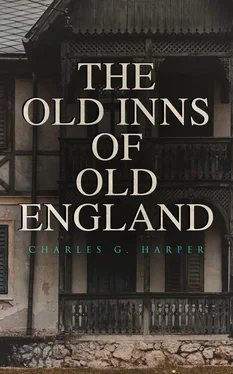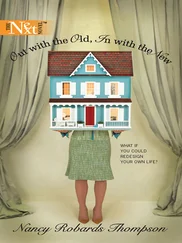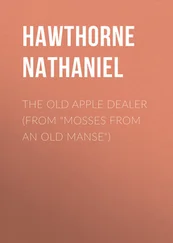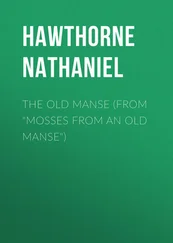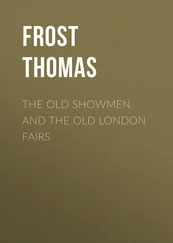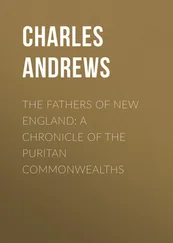It was in those “good old days” that are so interesting to read about, and were so ill to live in, that the ancient hospice flourished most bravely. When ways were not merely rough and lonely, but were also infested by “sturdye beggaris,” “maysterless men,” and others who would not hesitate to do the solitary traveller a hurt, the good abbots or monks who established wayside houses of entertainment where no secular innkeeper dared were truly benefactors to their species. The relic of just such a place, on a road once extremely lonely and dangerous, is to be found along the present highway between Brecon and Llandovery, in South Wales, some two miles westward of the town of Brecon. The road runs terraced above the southern bank of the river Usk, through a rugged country where, in ancient times, Welsh chieftains and outlaws, alike lawless and beggarly, knocked the solitary traveller on the head and went over his pockets amid the appropriately dramatic scenery of beetling crag and splashing waterfall. At the gate of this lurk of bandits the holy monks of Malvern Priory founded an hospitium, on the spot where stand to-day the ancient and picturesque church and the few houses of the village of Llanspyddid: whose Welsh name, indeed, means the Hospice Church.
Nothing, unfortunately, is left of that “spythy,” or hospice, they so piously built and maintained, for, its usefulness long overpast, it was left to decay: but the church they built, in which travellers returned thanks for the succour vouchsafed them, remains by the roadside. It is a romantic-looking church, placed in an appropriate setting of extremely ancient and funereal-looking yews that lead up darkly to the heavy north porch, beautifully decorated with carved woodwork.
The “George” at Glastonbury presents the finest exterior of all these pilgrims’ inns, for it stands to-day very much as it did in the time of Edward the Sixth, when it was built (1475) by Abbot John Selwood for the accommodation of such pilgrims as were not personages. There has ever been a subtle distinction between a personage and a mere person. The great ones, the high and mighty of the land, on pilgrimage were made much of, and entertained by my lord Abbot in appropriately princely fashion, in the Abbot’s lodgings: the middle-class pilgrims were lodged at the Abbot’s inn, and the residue lay where best they might: perhaps in some guesten-hall, or possibly in the open air.
Pilgrimages to Glastonbury were less numerous and popular than those to the pre-eminent Shrine of the Blessed St. Thomas at Canterbury, but they were not few, for the story of this great mitred Somersetshire Abbey is one of the marvels and legendary wonders that, however greatly they may stagger the twentieth-century capacity for belief, were of old implicitly relied upon. Few were those who in mediæval times questioned their genuineness, and those who did so kept their doubts prudently to themselves.
This marvellous lore narrates how it was to St. Joseph of Arimathea that the Abbey owed its origin. In A.D. 63 he came, with eleven companions, wandering among the bogs and morasses of this western land, and discovered this elevated ground rising above the marshes, further topped by the commanding peak of Glastonbury Tor. “Weary all!” they exclaimed, as they sank down, exhausted, on the spot called Weary All Hill to this day, although its name is properly “Wirrall.” Here St. Joseph thrust his staff into the ground, and, taking root and blossoming every Christmas Day for over fourteen hundred years, it was known in all Christendom as the Holy Thorn.

THE “GEORGE,” GLASTONBURY.
The Holy Thorn itself was a sight to see, for, whatever its origin, it did actually blossom on or about Christmas, as descendants from the parent stock do to this day. The original hawthorn—or what was looked upon in the time of Queen Elizabeth as the original—was fanatically attacked by an early Puritan who succeeded in felling one of its two trunks, and was proceeding to destroy the other, when he struck his leg instead, and had an eye gouged out by a flying chip: an incident that would have pleased the old monks, had they not been dead and gone a generation earlier. This capacity in the Holy Thorn for taking its own part did not avail when a Cromwellian soldier-saint, a half-century or so later, cut it down. Nothing in the tragical way appears to have happened to him.
An object of even greater veneration than the Holy Thorn was the body of St. Dunstan, stolen by the monks of Glastonbury from Canterbury, and for long centuries a source of great revenue, in the shape of offerings from the faithful, eager for his spiritual good offices or for the healing touch of his relics.
That which was too staggering for the belief of old-time pilgrims was never discovered. At Glastonbury they were shown a part of Moses’ rod, some milk and some hair of the Virgin, part of the hem of the Saviour’s garment, a nail from the Cross, and a thorn from the Crown of Thorns. No one ever questioned those blasphemous mediæval Barnums, who showed a sample of the manna that fed the children of Israel, and the incredible item of “the dust of Shadrach, Meshach, and Abednego, the three children sacrificed in the burning fiery furnace, with the bone of one of them”; and so they humbugged the devout for centuries.
Pilgrims of all kinds, bringing offerings, each one according to his means, were clearly to be encouraged, and there was from a very early period an “Abbot’s Inn” at Glastonbury. This stood on the site of the present “White Hart” until about 1755, when, to prevent it falling, it was pulled down. It had, however, ceased to be the Abbot’s Inn about 1489, the newly built “George” then taking its place. How dilapidated was the more ancient building may be understood from the story which tells of an auction being held on an upper floor, just before its demolition. “Going, going!” exclaimed the auctioneer, and then, as he accepted a bid, “Gone!”: whereupon the entire flooring of the room gave way, and every one and everything were, with a tremendous crash, precipitated down to the ground floor.
Abbot Selwood, who ruled from 1456 to 1493, built the “George” for middle-class pilgrims, and gave them board and lodging free for two days. He did so from a strictly business point of view; and we may even suspect that, if his guests made a longer stay, he recompensed himself by overcharging.
Although a room is shown in which King Henry the Eighth is said to have slept—heavens! did they treat him as a middle-class pilgrim?—and a room with oaken beams is termed the “Abbot’s Room,” there is little to be seen within, save the original stone newel staircase leading upstairs and a stone bench in the cellar now christened the Penitents’ Seat, on which, if you please, sinners under conviction sat, with water up to their knees. For my part, although the perennial spring is there, I remain sceptical of aught but beer-barrels and hogsheads of wine ever having occupied that Penitents’ Form. Penitents frequenting the cellars where the booze is kept are suspect.
The exterior, however, is a very fine example of the late Perpendicular phase of Gothic architecture, as applied to domestic or semi-domestic uses. The battlements formerly had stone figures peering from each embrasure, figures traditionally said to have represented the Twelve Cæsars, or the Twelve Apostles. Exactly how this was managed can hardly be seen, for there are but seven openings. Only one figure now remains, and he looks little like a Cæsar, and very much less like an Apostle.
At the present time the “George” is a “family and commercial” hotel. Its notepaper would seem to indicate that it is not the house for Dissenters, for it displays, beneath a mitre and crossed croziers, an aspiration in Latin to the effect that “May the Anglican Church Flourish.” Our withers are wrung: we are galled, and wince.
Читать дальше
